Sarah Sundin's Blog, page 123
August 15, 2022
Victory Gardens in World War II

For the average American in World War II, the Victory Garden was a practical way to contribute to the war effort. Some 20 million Victory Gardens were planted (US population in 1940 was 132 million), and by 1943, these little plots produced 40 percent of all vegetables consumed in the US. It’s estimated that 9-10 million tons of vegetables were grown.
The Need for Victory GardensWartime needs stretched agricultural production. The United States not only had to feed its own civilian and military population, but many of the Allies relied on America’s bread basket. In addition, U-boats sank hundreds of food-laden ships bound for Britain. While the need expanded, the number of farm workers decreased due to the draft and – ironically – due to the internment of Japanese-Americans.
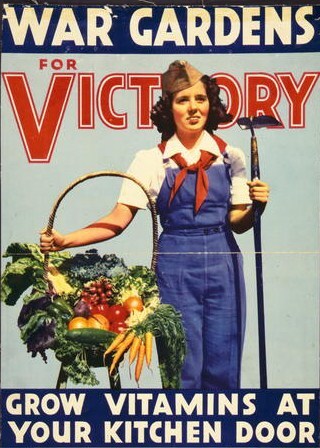
Victory Garden poster, US, WWII
Canned fruits and vegetables were rationed starting March 1, 1943, so civilians were encouraged to grow their own produce to supplement their rations. The use of fewer canned goods would decrease the use of precious tin and reduce the strain on the heavily taxed rail and road systems.
The Victory Garden Program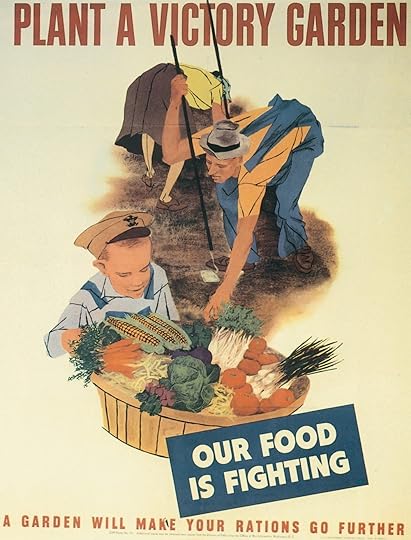
US poster promoting Victory Gardens, 1943
In December 1941, shortly after the United States entered World War II, Agriculture Secretary Claude Wickard began promoting Victory Gardens. The Department of Agriculture produced pamphlets to guide urban and suburban gardeners, magazines and newspapers published helpful articles, and patriotic posters urged participation.
Neighborhood and community committees were formed with veteran gardeners guiding newcomers. These committees also helped with distribution of surplus food and sharing of equipment. Many garden tools were made of steel, which was in short supply, so sharing between families was encouraged.
Who Could Participate?
Victory Garden poster, US, WWII
Victory Gardens were promoted as family fun, as good healthy recreation for all ages. Farmers were encouraged to plant gardens for family needs as well as their usual cash crop. Those living in small towns or suburbs were the best candidates for Victory Gardens. Interestingly, the Department of Agriculture discouraged city-dwellers from gardening, afraid of seed being wasted on poor soil and poor lighting.
Where Were Gardens Grown?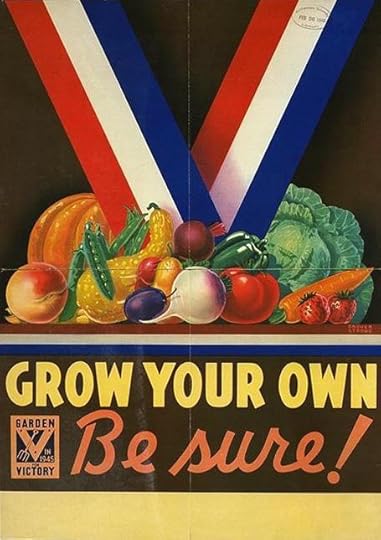
Poster for Victory Gardens, US, 1945
Victory Gardens sprang up on farms, in backyards, and on city rooftops. Even some window-boxes were converted from flowers to vegetables. Communal gardens were planted in parks and vacant lots and baseball fields. Sites for these gardens included San Francisco’s Golden Gate Park, the Portland Zoo in Oregon, and Boston’s Copley Square and Fenway Victory Gardens. The Fenway site is still an active Victory Garden today.
War plants often planted gardens on their properties for use in company cafeterias, and schoolyard gardens provided fresh vegetables for school lunches. This article from the Chicago Tribune tells some fun stories of Victory Gardens in Chicago during the war.
How to Garden?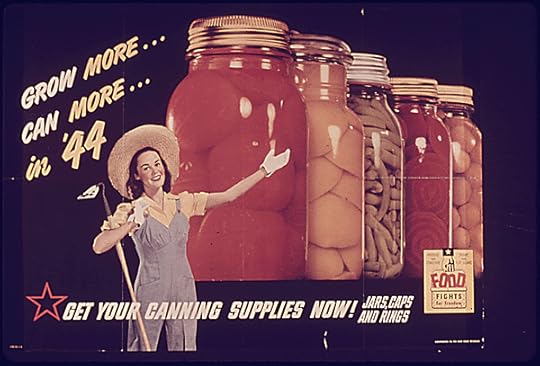
US poster promoting canning, 1944
The average small-town or city-dweller knew little about gardening. Pamphlets provided sample planting schedules and garden plans to show the newcomer how to grow enough to feed his family for a year without wasting seed or food. These pamphlets described how to choose the garden site, prepare the soil, fertilize, plant properly, weed, and harvest. The Department of Agriculture and the War Production Board prepared a special Victory Garden fertilizer for home use.
Preservation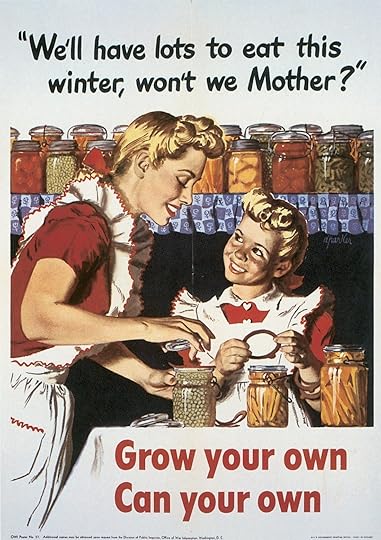
US poster promoting canning, 1943
The ideal Victory Garden produced fresh vegetables in season and plenty to be preserved for winter. Women’s magazines published articles about how to can, store, dry, pickle, and freeze the bounty.
A poll in January 1944 found that 75 percent of housewives canned, and those women canned an average of 165 jars per year. This met the family’s needs and preserved ration points for foods they couldn’t grow. Extra canned fruits and vegetables were shared with neighbors or donated to the needy.
Victory Gardens in World War II were more than a way to increase morale. They produced a significant amount of healthy food, allowing agricultural produce to be used for the military and the Allies, and reducing the use of tin and transportation. Despite rationing, the average American ate better during the war than before. The Victory Garden was part of the reason.
Sources:Lingeman, Richard R. Don’t You Know There’s a War on? The American Home Front 1941-1945. New York: G.P. Putnam’s Sons, 1970.
The Victory Garden Foundation website, accessed 2012. (Site no longer active.)
The post Victory Gardens in World War II first appeared on Sarah Sundin.Today in World War II History—August 15, 1942
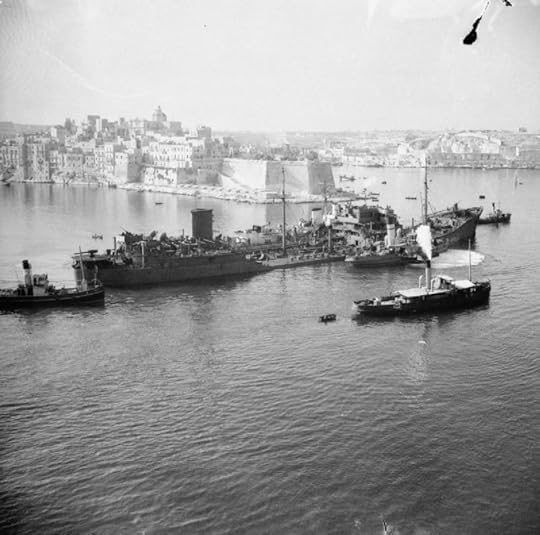
Tanker Ohio from Pedestal convoy and two supporting destroyers in Grand Harbour, Malta, 15 August 1942 (Imperial War Museum: GM 1480)
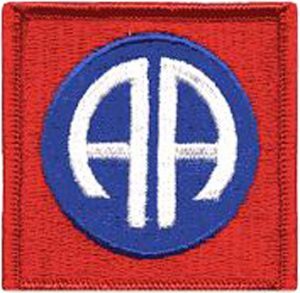
Patch of the US 82nd Airborne Division
80 Years Ago—Aug. 15, 1942: Allied “Pedestal” convoy arrives in Malta—only 5 of 14 cargo ships have survived persistent attack by air and sea (including damaged British tanker Ohio lashed to destroyers HMS Penn and HMS Ledbury), but enough supplies arrive to maintain the island.
US 82nd Airborne Division is organized from 82nd Infantry Division, becoming America’s first airborne division, under Maj. Gen. Matthew Ridgway at Camp Claiborne, LA.
In Hawaii, new paper money printed with “Hawaii” and brown wartime seal becomes only legal tender, to prevent US currency from falling into Japanese hands in case of invasion.
The post Today in World War II History—August 15, 1942 first appeared on Sarah Sundin.August 14, 2022
Today in World War II History—August 14, 1942

US poster urging more P-38 Lightning production, WWII (US National Archives: 514398)
80 Years Ago—Aug. 14, 1942: Two P-38 Lightnings of the US 1st Fighter Group shoot down a German Fw 200 Condor bomber off Iceland—the first US claim against the Luftwaffe.
The post Today in World War II History—August 14, 1942 first appeared on Sarah Sundin.August 13, 2022
Today in World War II History—August 13, 1942
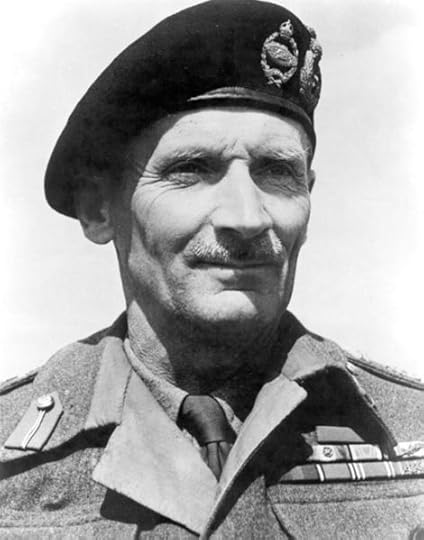
Gen. Bernard Montgomery, WWII (British government photo)
80 Years Ago—Aug. 13, 1942: Lt. Gen. Bernard Montgomery assumes command of the British Eighth Army in Egypt.
Japanese secure the Buna-Kokoda Trail on New Guinea.
US Army forms the Manhattan Engineering District for secret atomic research.
Movie premiere of Disney’s Bambi at New York’s Radio City Music Hall.
The post Today in World War II History—August 13, 1942 first appeared on Sarah Sundin.August 12, 2022
Today in World War II History—August 12, 1942
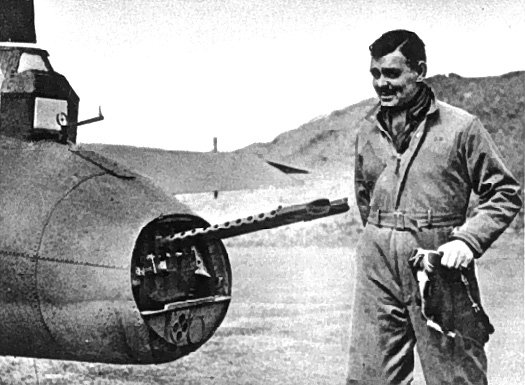
Capt. Clark Gable and a B-17 Flying Fortress with the US Eighth Air Force in England, 12 June 1943 (US Army photo)
80 Years Ago—Aug. 12, 1942: Second Moscow Conference opens: Churchill and Stalin meet for the first time and discuss opening a second front in the west.
In Chesapeake Bay, light cruiser USS Cleveland performs successful test of VT proximity-fuzed antiaircraft shells.
Actor Clark Gable enlists in the US Army Air Force.
The post Today in World War II History—August 12, 1942 first appeared on Sarah Sundin.August 11, 2022
Today in World War II History—August 11, 1942
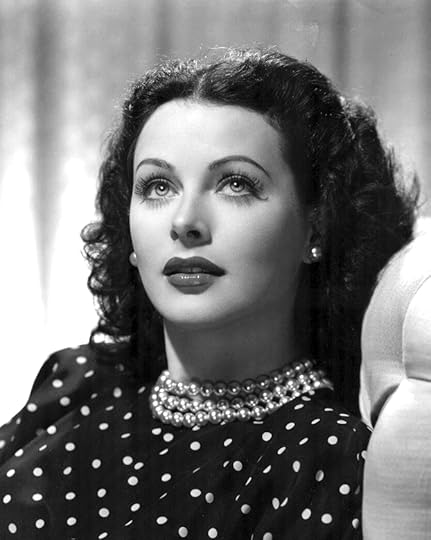
Hedy Lamarr publicity photo for the film The Heavenly Body, 1944 (public domain via Wikipedia)
80 Years Ago—Aug. 11, 1942: In British “Pedestal” convoy to Malta, carrier HMS Eagle is sunk by German U-boat U-73.
US War Production Board orders entire crop of wine grapes be made into raisins for the military.
Actress Hedy Lamarr and musician George Antheil receive a patent for a frequency-hopping system to prevent interception and jamming of radio communications; although not used in WWII, the technology makes cellular phones possible.
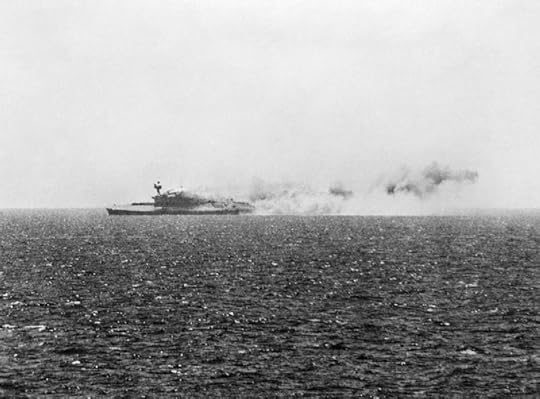
HMS Eagle listing in the Mediterranean Sea, 11 Aug 1942 (Imperial War Museum: A 11302)
The post Today in World War II History—August 11, 1942 first appeared on Sarah Sundin.August 10, 2022
Today in World War II History—August 10, 1942
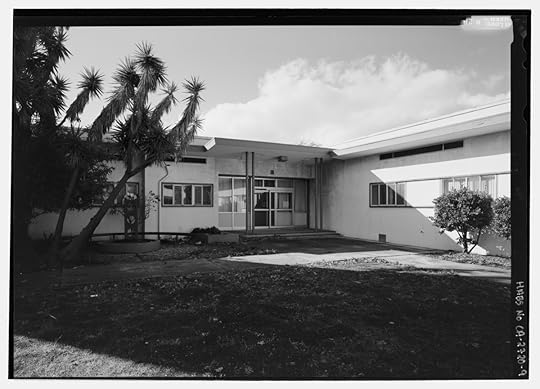
Kaiser Richmond Field Hospital, Richmond, CA, 2014 (National Park Service photo: Library of Congress HABS CAL,7-RICH,4-9)
80 Years Ago—Aug. 10, 1942: Germans cross the Don River and enter the outskirts of Stalingrad.
Germans begin deportation of 40,000 Jews from Lvov ghetto over the next 12 days.
Kaiser Richmond Field Hospital opens for employees of Kaiser Shipyard in Richmond, CA.
The post Today in World War II History—August 10, 1942 first appeared on Sarah Sundin.August 9, 2022
Today in World War II History—August 9, 1942
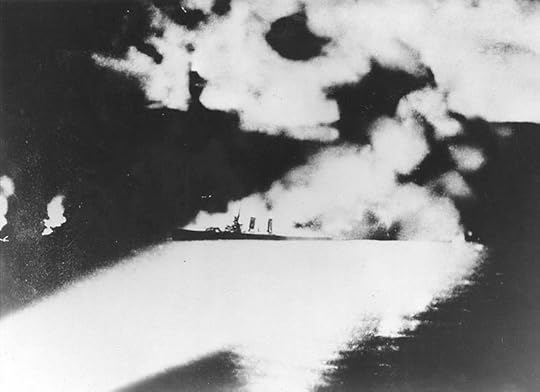
Heavy cruiser USS Quincy illuminated by Japanese searchlights during Battle of Savo Island, 9 Aug 1942 (US Navy photo: NH 50346)
80 Years Ago—Aug. 9, 1942: German Army Group A takes Maikop oil fields in the Caucasus, but finds them mostly destroyed by the Soviets.
In the Battle of Savo Island off Guadalcanal, Japanese ships sink Australian heavy cruiser Canberra and US heavy cruisers Astoria, Quincy, and Vincennes; over 1000 killed in one of the US Navy’s worst defeats ever.
British jail Gandhi and Nehru in India; riots break out, with hundreds killed.
The post Today in World War II History—August 9, 1942 first appeared on Sarah Sundin.August 8, 2022
Today in World War II History—August 8, 1942
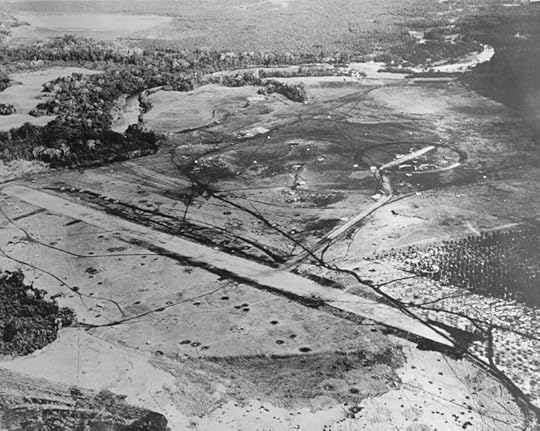
Henderson Field, Guadalcanal, photographed from a USS Saratoga plane, late August 1942 (US Navy photo: 80-G-16312)
80 Years Ago—Aug. 8, 1942: US Marines take airfield on Guadalcanal, to be renamed Henderson Field.
Lt. Gen. Dwight Eisenhower is chosen to command Operation Torch, the invasion of Algeria and French Morocco in November 1942.
Six of the German saboteurs who landed by U-boat in the US in June are executed; the other two receive long sentences.
In Bombay, Mohatma Gandhi makes anti-British “Quit India” speech.
New song in the Top Ten: “I Left My Heart at the Stage Door Canteen.”
The post Today in World War II History—August 8, 1942 first appeared on Sarah Sundin.August 7, 2022
Today in World War II History—August 7, 1942
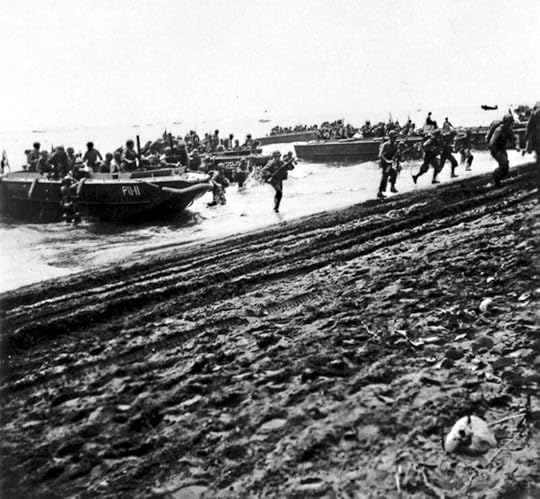
US First Division Marines storm ashore across Guadalcanal’s beaches, 7 August 1942, from attack transport USS Barnett and attack cargo ship USS Fomalhaut (US National Archives: 80-CF-112-5-3)
80 Years Ago—Aug. 7, 1942: US Marines land on Guadalcanal in the Solomon Islands in the first US offensive of the war.
Lt. Gen. William Gott, new commander of the British Eighth Army, is killed when his plane is shot down in Egypt.
US Western Defense Command announces completion of the detention of 119,000 Japanese-Americans.
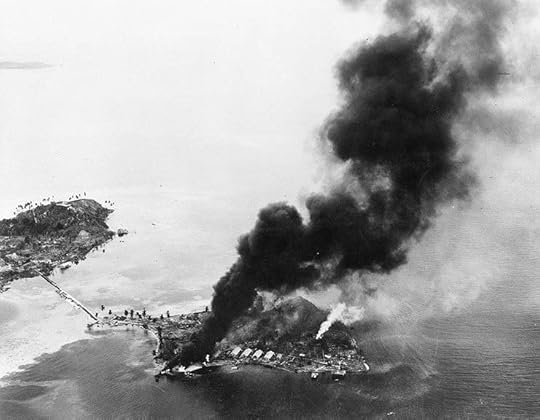
Japanese facilities on fire, Tanambogo Island, east of Tulagi, Solomon Islands, 7 Aug 1942 (US National Archives: 80-G-19223)
The post Today in World War II History—August 7, 1942 first appeared on Sarah Sundin.


